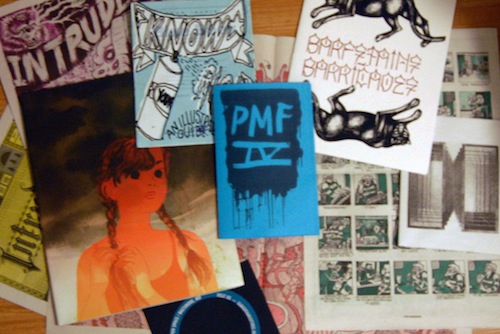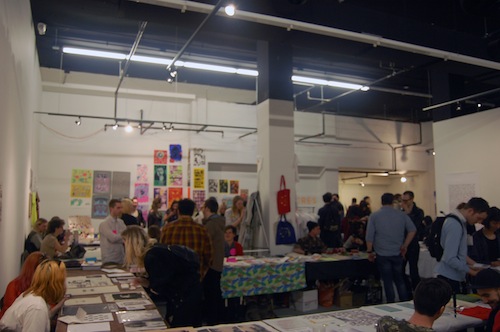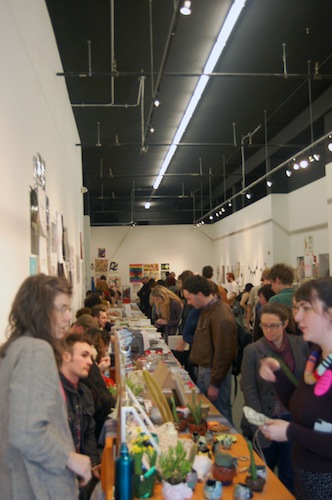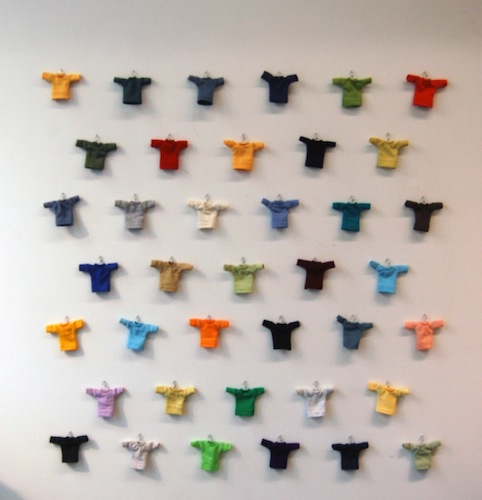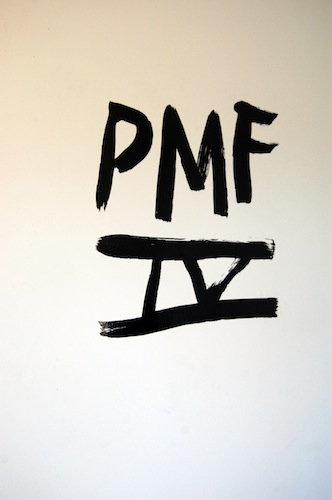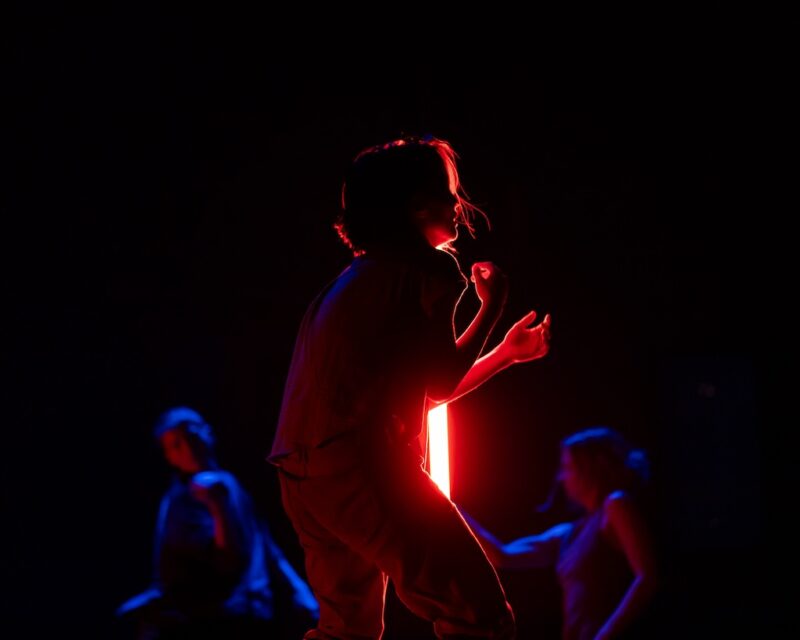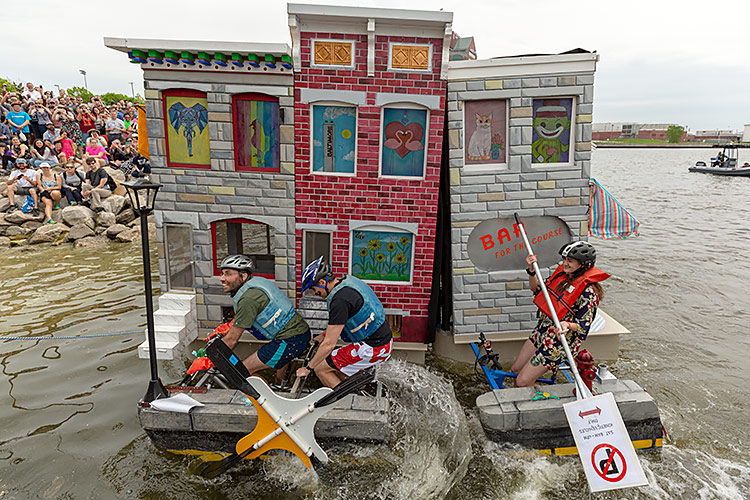It has become less and less uncommon to see the corner of Charles Street and North Avenue littered with art folks these days. Typically, crowds gather with the setting sun just in time for the performance spaces and bars to open their doors. But this past weekend swarms of people were found all day long, attending one of the most anticipated events to come out of Baltimore’s small gallery scene, the Prints and Multiples Fair.
For the fourth consecutive year, Remington’s Open Space gallery has brought the Prints and Multiples Fair (PMF) to Baltimore and proven that print remains a highly viable medium. Unlike the previous three years, Station North’s D-Center hosted the festivities. Don’t worry, there is a perfectly good reason for the move: PMF has finally exceeded the limits of Open Space’s, well, open space.
This year over fifty-five vendors set up shop, making it the largest PMF yet, and drew artists from as far as Seattle. In-between the usual tables filled with ‘zines, there were a slew of unexpected tables carrying other art “multiples,” the most interesting, a local artist (Jen Liu, MICA BFA 12) selling teeny, tiny t-shirts. Behind the busy market of art peddlers, a stage was set up for panel discussions and readings (one contained a deconstructive analysis on Superman). These events spilled over into after-fair hours and a screening of shorts was held at the Floristree performance space.
The best aspect of PMF is its accessibility. The number of flashy, collectible, and inexpensive artworks is enough to stir the inner art hoarder in every American. Most of this art can be picked up, interacted with, and has an easily understood function. And this year, the collaboration between Open Space and D-Center offered a highly trafficked sidewalk with two big open doors saying “Come on In.” While most of the people inside were the usual art attendees, some new folks came in, too. PMF couldn’t be in a better area then Station North, a neighborhood that is being gentrified faster then any other in Baltimore right now. As with previous shows, the D-Center strives for strong connections with the surrounding area (2011’s Open City show stands out from recent memory), and this additional push for inclusion strengthens the fair.
So here’s to another fair here and gone. Hopefully everyone was able to get those back issues and limited edition prints they wanted. When the sun set on Sunday and the doors where finally closed, three things were certain: this year was best yet, print is most definitely not dead, and next year will continue to be better.
Sean Ostrowski is a MICA graduate and Baltimore-based designer.

